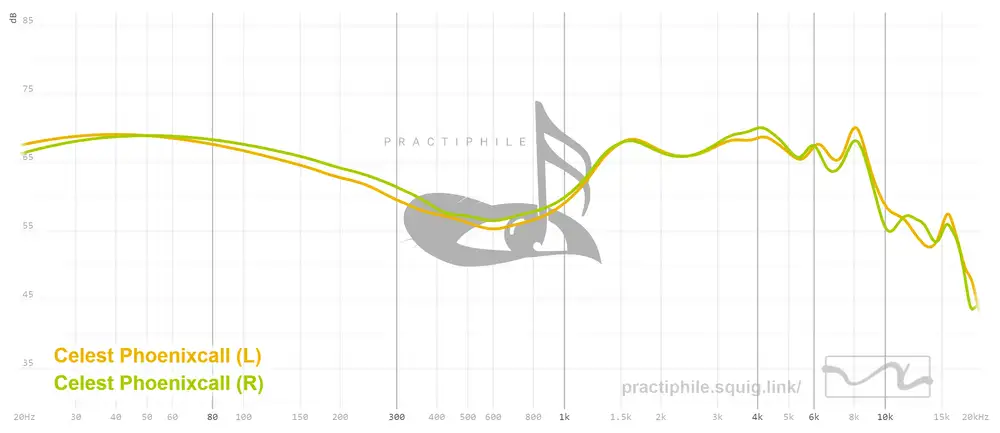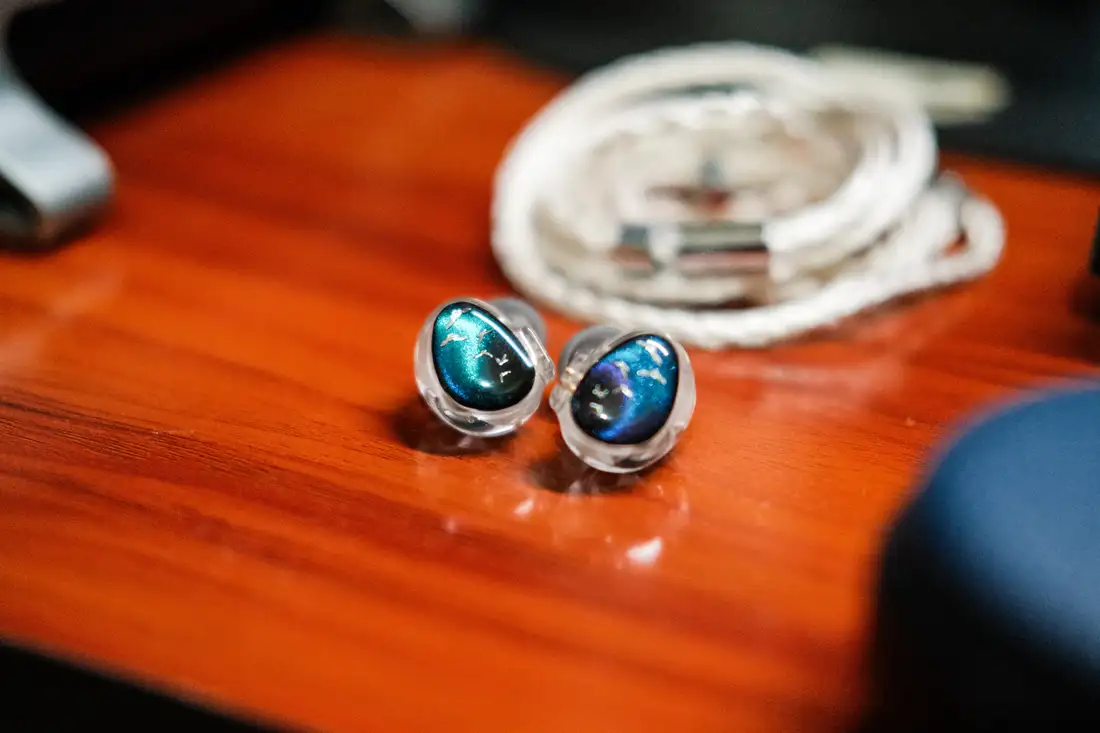First of all, I'd like to thank Kinera for sending me this beautiful IEM earphone, in exchange for my honest thoughts and review, with the emphasis that everything I say here should be of my own volition, and to take my time in reviewing this.
My perception of Kinera as an audio company is; that they belong in the mid-range to high-end class company based in China, their products always have artful and beautiful designs with lore behind them, Celest is a daughter brand of Kinera.
The Celest PhoenixCall cost 129.99 dollars but can be bought with discounts at my local shops in Lazada and Shopee, The packaging quality of the PhoenixCall is excellent, and the included cable is very good, and better than the included cables from my Moodrop Blessing 3 which cost 320 dollars and the Hidizs MP145 which cost around 150 dollars. The included ear tips are good too and doesn't feel cheap like the included tips from the Blessing 3. The build quality of the IEM itself looks and feels the same as the Blessing 3, which is very good as they both have 3d printed resin as shells, ensuring better production accuracy and consistency.
The PhoenixCall is a tribrid IEM, meaning it uses three types of drivers, a 7mm dynamic driver, a pair of micro planar drivers, and a pair of balanced armature drivers. it uses sound tubes to direct the sound to the ear canal.
The pre-installed white ear tips are good sounding, but I like the stock black ear tips much better, I love the sound of the PhoenixCall with it, It has better bass texture and note weight, better soundstage and even more natural overall sound, the PhoenixCall seems to be tuned with those tips in mind, but even so, I still tried the other tips in my collection and found the KZ Starline tips and the Moondrop Spring tips tend to make the bass sound thicker and the high frequency reduced, the Acoustune and Kbear 07 tips tend to increase the mid-range and upper mid-range, I also like the TRN T-tips and the Acoustune AET08. I highly recommend experimenting with other tips to get the best out of it, and again, I love the sound with the stock black tips.

I mostly used the Topping G5, Moondrop Moonriver 2 and the Fiio KA11 for this review, while the PhoenixCall can be driven easily with small and less powerful dongles, it needs your best quality dac/amps for the best result, as it can easily reveal the deficiency of lesser quality dac/amps. No equalization or any sound processing was used.
The sound:
Tonality and sound signature;
This is undeniably V-shape sounding to me, But some call it W-shape, because the mid-range and vocals may sound a little recessed, but they also sound very clear. The overall sound is very natural, clear and nonfatiguing, the sound presentation is like the sound of a high-end speaker system.
Technicalities;
Simply above average, it has clear and defined images, that are presented in 3d, layered and separated manner in a big soundstage.
Bass;
There is a little warmth in the bass, but the overall presentation is natural. The bass sounds fast, fairly detailed and never lean sounding, the dynamics are also very good and sound energetic. The sub-bass is rolled off but not devoid of it, I can still hear some sub-bass.
Midrange;
A little recessed but with very good clarity, this is not like most V-shaped IEMs where the mids are recessed and muddy, this is very clear and natural, I've listened to this for many hours and went through my music library to find faults, I haven't found any, There is no honkiness, shoutiness, glare and other coloration, all I hear is natural sound.
Treble;
Detailed, airy, clean, clear, noncongested and elevated, yet still sounds natural. I find no fatiguing sharpness, unnatural sibilance and muddy distortion.
Sensitivity, Power handling and Dynamics;
Now, this is the bonus part about the PhonixCall, I never expected this and only became aware as I listened more intently, the sensitivity is just average and it is easy to drive, but the power handing is excellent, it can take more power and go louder than the Blessing 3 and MP145, without distortion, mechanical noises and obvious dynamic compression. I have only tested this for a short time though, otherwise, my hearing would have been damaged by now.
vs the Hidizs MP145 (150usd)
The MP145 sounds warmer and darker on some songs, the bass on the MP145 sounds bigger and the vocals are more forward and fuller. The PhoenixCall on the other hand has more apparent details, treble air and overall clarity, both are very musical, natural and engaging sounding they sound different enough that I cannot recommend one or the other, I recommend them both.
vs Moondrop Blessing 3 (320usd)
The technicalities of the Blessing 3 are simply a class or two above PhoenixCall's, It is more holographic in image presentation, has more separation, layering and resolution, and has a bigger soundstage, but the downside is its lean-sounding note weight, on some songs it is okay, but on some, it sounds a little cold and clinical. On the other hand, the PhoenixCall sounds warmer, more engaging, more forgiving and more pleasant to listen to, on a long listening session. In terms of technicalities, the Blessing 3 wins, But in terms of listenability, the PhonixCall wins easily. Again, I can't recommend one over the other because they sound different enough to be used on different occasions and moods.
vs Simgot EA500 (80usd)
If you like the EA500 with the black nozzle, You'll gonna love the PhoenixCall, I consider the PhoenixCall a legit upgrade to the EA500, It has similar tonality but the PhoenixCall is warmer, less shouty, smoother, has more resolution, airier, clearer and so on, there is nothing in the EA500 I could find to be better than the PhoenixCall, I highly recommend the PhonixCall as an upgrade to the EA500, or at least, that's what I feel about it.
vs Mondrop Starfield 2 (110usd)
The Moondrop Starfield 2 is within the price range of the PhoenixCall, If you are asking which one to buy, Just buy the PhoenixCall, It simply has better overall sound, The Starfield 2 sounds fatiguing at times and not as airy in the highs.
vs CCA Rhapsody (40usd)
The Rhapsody is very good for the price, but cannot compete with the PhoenixCall in every way except the price. If you are looking for an upgrade to the Rhapsody, I highly recommend the PhoenixCall.
vs Moondrop May (60usd)
The sound signature of the May sits between the MP145 and the Rhapsody, and I find it to sound a little better than the Rhapsody overall, The May sounds warm and a little dark at times, I can't say the PhoenixCall is an upgrade to the May, The MP145 is the more likely candidate for that. But in terms of overall sound quality, the PhoenixCall is simply better and more natural.
No IEM is perfect, and that includes the PhoenixCall, I spent many hours finding faults with it, I only wish it had just a little more sub-bass and this is a nitpick, I really love the sound of this IEM with the stock black tips, but in any case, the PhoenixCall sounds so good that it made me curious about other Kinera IEMs in the higher price range, including those from the sister brand of Celest, QOA, or Queen of Audio, I'm seriously thinking of getting.
Thank you for reading and Happy Chinese New Year to all. Cheers!
2-10-2024

































